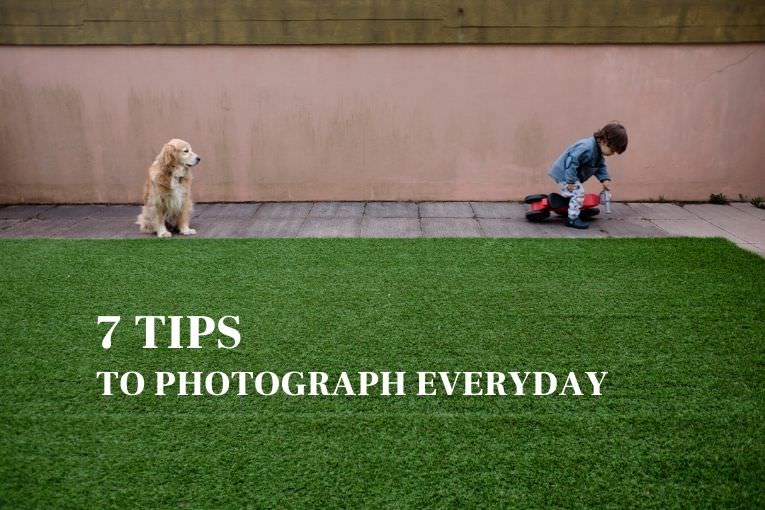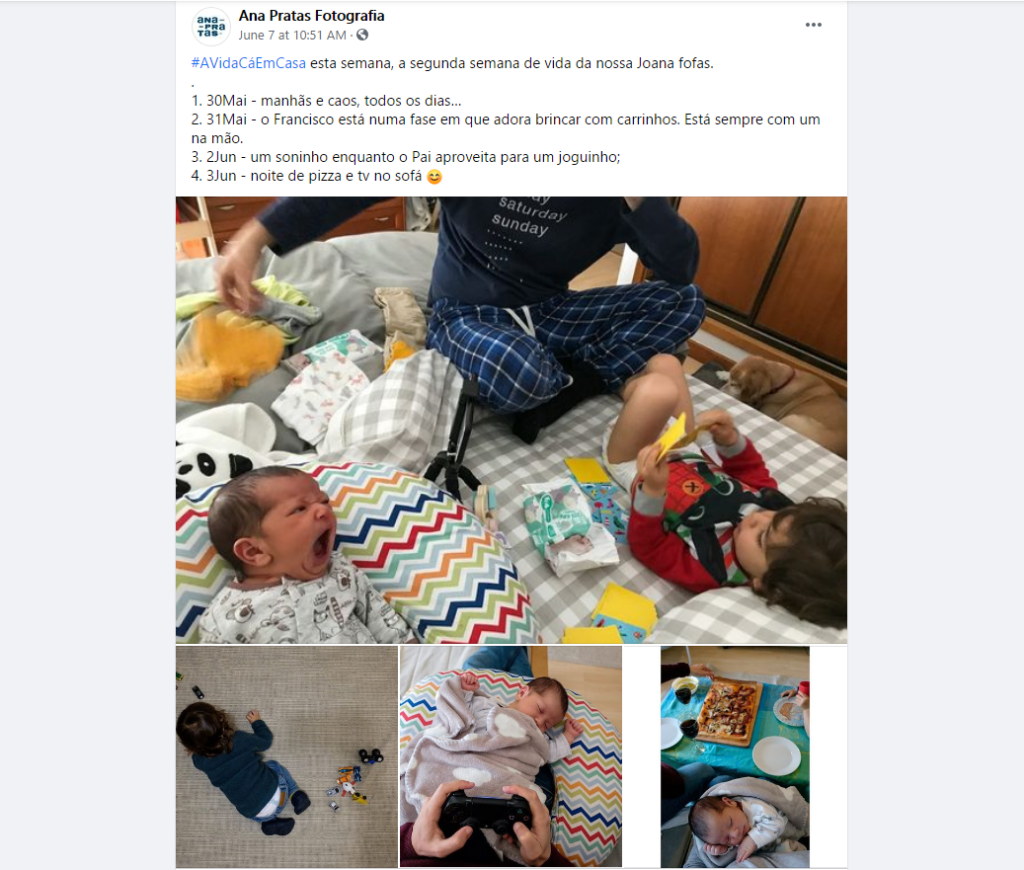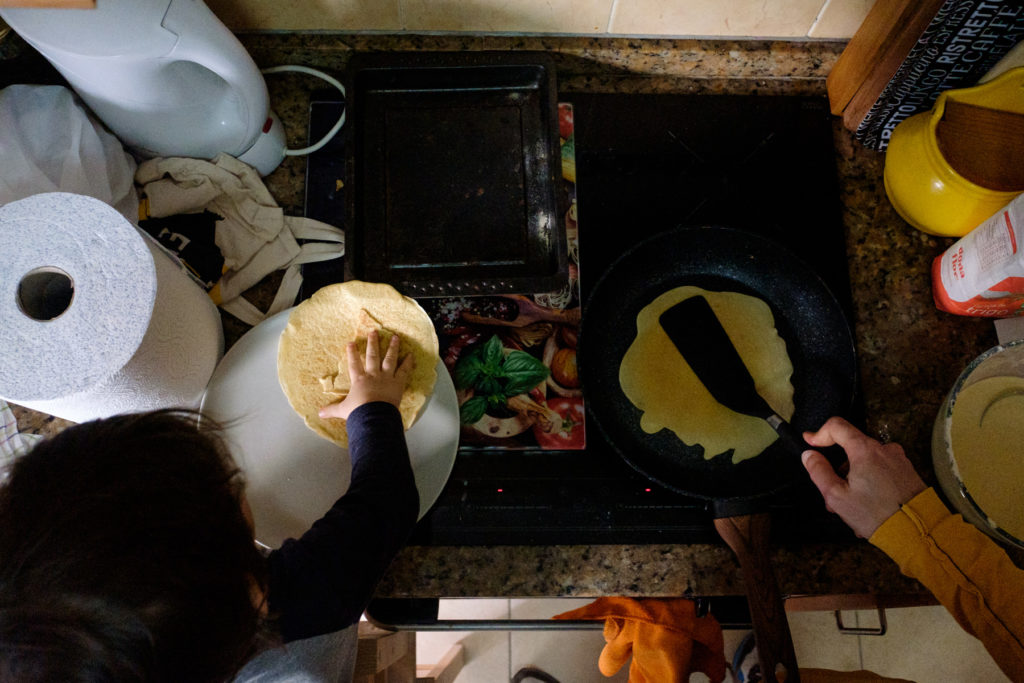
Take one picture a day
Currently, taking one photo a day is a well-known photo challenge practiced on Instagram.
This project consists of taking a photo every day, for 365 days. The sharing on this social network is done with the respective caption/hashtag of the countdown until the last day of the project.

Of course, there can be variations of this challenge. For example, I opted for a weekly version of this photo challenge with “Life at Home” – which I share on Instagram and Facebook).
Photographing every day can also be a great way for us to collect pictures of our family moments to ultimately make an annual album of all those photographs.
Sounds good, doesn’t it? 🙂
A 365 photo project: from enthusiasm to demotivation

At the beginning of the project we are more motivated and everything seems to make sense. It’s easy to shoot and we make a good variety of pictures in various settings.
As the days go by, we start to have a hard time taking pictures that look different. We get a feeling that we run out of photos and ideas. Either because the days look too much the same – the same routines/timetables, or because we want too much to photograph something different.
From my own experience, I think a photography project like this is fantastic and challenging. However, the idea of daily commitment and the search for “more special” moments might create moments of demotivation.
So I decided to share these tips so that you get the most out of this challenge and have 365 reasons to smile at the end.
Let’s go!
Tips for shooting everyday
Tip 1: Always have your camera/cell phone nearby. If something interesting is happening, you can quickly grab the equipment and take a picture.
Tip 2: Try not to feel an obligation to shoot all the time. The feeling that you “have to shoot” will create enormous pressure to look for opportune moments.
In this type of project we end up having to train ourselves to anticipate and learn to wait, to better predict the ideal moments to shoot.
We must study and explore various forms and techniques of photography. Several different angles in the same space, the best light/time of day, the spaces where more activity happens and at what times. For example, to know when to use Burst Mode because we know the kids can do a certain activity/behave a certain way in that little bit and we can photograph a lot of it. Basically, we need to train ourselves so that when the moment happens we can anticipate it more easily, capture it the way we would like to capture it, and make better pictures.

Tip 3: What to do when the moment we’re looking for doesn’t happen?
We can make a list of ideas of moments we would like to collect. (That expression he makes when he is drawing, the pout he makes when we tell him to put his toys away, or his cradled look as he drinks his evening bottle).
So we just have to wait for the moments to happen naturally, anticipating that they might happen, and try to capture them. No pressure!
It may not be the first, or the second, or the third… but they will certainly happen!
(My son does certain things that I would like to record “for the future”. For example, at mealtimes there are certain gestures and expressions, such as: putting his head on the plate, imitating our dog eating, getting all dirty and rubbing his hands on his face, asking us to clean our hands.
Little things that are very peculiar to him and that I would like to eternalize in photographs. Some of them I have already managed to register, but others I will wait for the situations to happen so that I can photograph them).
Tip 4: Use “unattended” photography.
This is a very good tip, because it allows us to include ourselves in the photograph – something difficult when we are always the ones photographing! To do this we need to use the camera’s intervalometer, or timelapse tool, so that the camera photographs itself every x seconds for a certain amount of time.
To do this, we place the camera in a strategic place (with or without a tripod), pointed at the area where the action will take place. For example: the table in the living room where we are going to play with the kids, the bed where we are going to dress them after their bath…).
After positioning the camera and directing it to where we want it to go, we just have to set it up to shoot frequently. (Every 2 seconds for 3 minutes, for example). This way, at the end of the time interval that we set, we can see the result of the several pictures taken by the camera. It is a very easy and practical way to get natural photographs of what is happening – and to be a part of those moments!

Tip 5: Don’t be afraid of “repeated photos”. We’ve already captured that moment and it seems like the photo is “repeated”. “So what?”. This is even a way for us to see how our children evolve and if they are keeping their expressions and behaviors.
(I often photograph F. painting, drawing and playing at his little table. However, I try to change the angle/composition from where I am photographing to get different compositions – seen from above, from one side or the other, more at his eye level, from further away, catching the whole corner).
So the photographs can be similar just by recording the same moment but in different ways over time.
Tip 6: Accept that not every photo is going to be “a great photograph”. Not every photo is going to look spectacular, just like not every day is great. But, they are all important and all your photos faithfully record time passing.
Tip 7: “Oops, I missed a day!”. It is possible that we forget or fail to photograph one day or another. But let that not be what makes us discourage or think that we didn’t make it after all. It just happens!
Since I started the project “Life here at home” there has been one day or another when I failed, when I didn’t even take the cell phone or the camera to photograph – because I was sick, tired, very pregnant…!
But if someday I make a book/album with these photos, I may even tell that I was “like that” on that day, and that was the reason why I didn’t take the photos – which is also part of the story.

These are some suggestions that I decided to share with you to help you photograph every day.
Do you have any tips to add to this list? Please share them in the comments! 😉